Analysis of Key Functions, Data Processing Logic, and Signal Security Optimization Strategies
In the wave of Industry 4.0 and digital transformation, Industrial 4G routers have emerged as the core hub connecting devices, the cloud, and edge computing. According to MarketsandMarkets, the global market for 5G industrial routers is projected to exceed $12 billion by 2026, with 4G routers continuing to dominate low-to-medium bandwidth scenarios. Their value lies not only in providing stable and reliable wireless connectivity but also in addressing core pain points in industrial settings, such as heterogeneous device interconnection, real-time data processing, and cybersecurity threats, through protocol conversion, edge computing, and security protection functions.
This article delves into how Industrial 4G routers serve as the "nerve center" of industrial IoT from three dimensions: key functions, data processing logic, and signal and security optimization. It explores their technological evolution through case studies in smart factories, intelligent energy, and other scenarios.
The fragmentation of device protocols is a primary challenge in industrial settings. For example, PLCs may use Modbus RTU, sensors rely on MQTT, and robot controllers adopt OPC UA. One of the core functions of Industrial 4G routers is protocol conversion and transparent transmission, enabling seamless interconnection of heterogeneous devices through built-in protocol libraries and custom development capabilities.
Technical Implementation:
Hardware Interfaces: Integrated RS485/RS232 serial ports, Ethernet ports, and Wi-Fi modules support short- and long-range communication needs. For instance, an automotive factory connected 300 robots using an industrial router with RS485-to-TCP protocol conversion, enabling real-time upload of robotic arm operation data to the MES system.
Software Engine: Rule-based protocol parsing and dynamic mapping convert Modbus register data into JSON format for cloud-based analysis. In a photovoltaic power plant project, the router converted inverter data from Modbus TCP to MQTT protocol for integration with Alibaba Cloud.
Industry Value: In a smart logistics warehouse, the router connected over 200 AGV trolleys, enabling collaborative control of multi-brand devices via OPC UA protocol and reducing manual intervention costs by 30%.
Traditional routers merely forward data, whereas Industrial 4G routers leverage edge computing capabilities to execute logic control and real-time decision-making locally, reducing reliance on the cloud.
Core Functions:
Rule Engine: Supports "IF-THEN" logic programming. For example, in a chemical production line, the router automatically triggered an alarm and activated a cooling system when reactor temperature exceeded a threshold, with a response time of <100ms.
Lightweight AI: Integrates TensorFlow Lite or ONNX Runtime to deploy pre-trained models. A wind farm deployed a vibration analysis model via the router, predicting bearing failures 72 hours in advance and reducing downtime losses by RMB 2 million annually.
Time-Sensitive Networking (TSN): Combined with 5G, it meets deterministic low-latency requirements in industrial scenarios. In a semiconductor manufacturing line, the router supported 1ms-level communication for precise collaborative control of robotic arms.
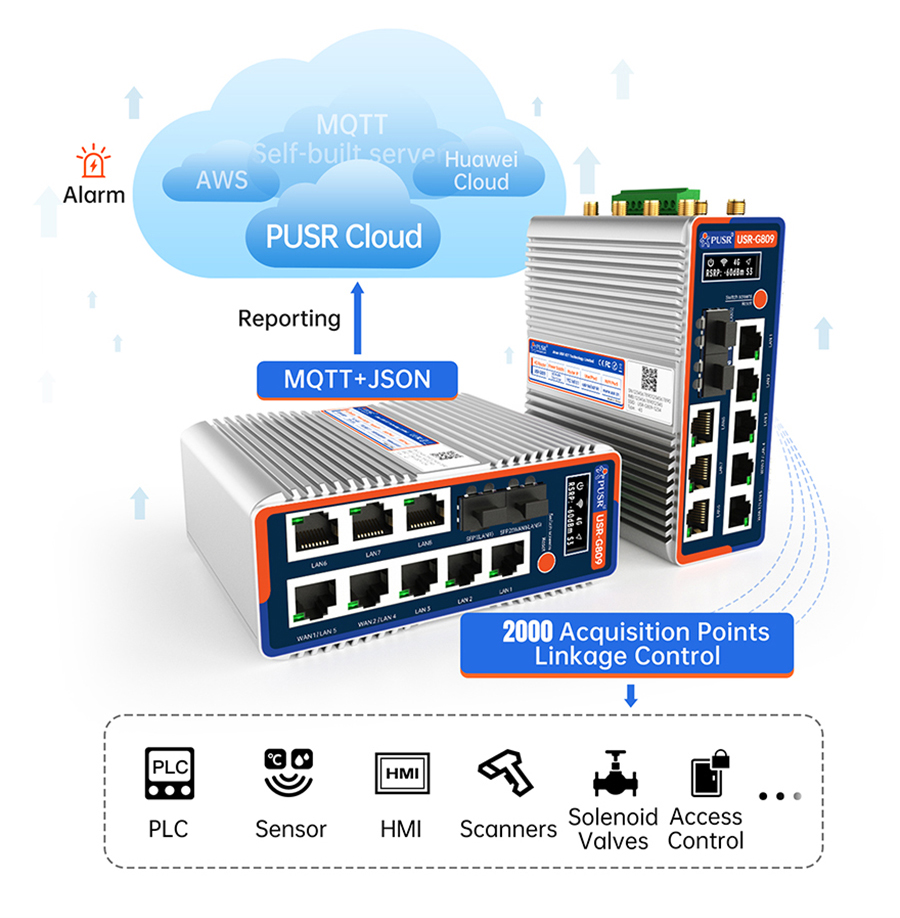
Industrial devices are widely distributed, making on-site maintenance costly. Routers enable "contactless" operations through remote configuration, firmware updates, and fault diagnosis.
Technical Implementation:
OTA (Over-the-Air) Updates: Supports secure remote firmware updates for devices. A logistics company remotely upgraded 500 vehicle terminals via the router, avoiding vehicle downtime.
Digital Twin: The router serves as a "digital mirror" of physical devices, mapping their status in real time. In a smart oilfield project, the router remotely debugged downhole sensors using digital twin technology, reducing on-site operation time by 80%.
Case Study: After deploying industrial routers on a highway, video transmission delay from accident scenes dropped from 15 seconds to 2 seconds, improving rescue efficiency by 60%.
Industrial device data is characterized by high noise and redundancy. Routers extract valuable information by cleaning, filtering, and transforming data, reducing cloud processing pressure.
Core Functions:
Noise Filtering: Removes invalid data. For example, in a smart grid project, the router smoothed raw data from current sensors to eliminate short-term fluctuations, improving fault detection accuracy by 15%.
Data Completion: Fills in missing values using interpolation algorithms. When a blast furnace temperature sensor in a steel plant lost data due to communication interruptions, the router restored data integrity via linear interpolation, preventing production accidents.
Unit Conversion: Unifies data formats. In a smart agriculture project, the router converted soil moisture sensor data from percentage to volumetric water content for easier analysis by cloud-based irrigation models.
Uploading massive device data directly to the cloud can cause bandwidth congestion and soaring storage costs. Routers compress data volume while preserving key features through temporal and spatial aggregation.
Technical Implementation:
Temporal Aggregation: Summarizes data by minute/hour. For example, in a wind farm, the router aggregated second-level wind speed sensor data into minute-level data, reducing daily data volume from 10GB to 100MB and cutting cloud storage costs by 90%.
Spatial Aggregation: Groups and statistically analyzes data from multiple devices in the same area. In a smart city project, the router aggregated data from 1,000+ traffic sensors by region to calculate average intersection speeds, reducing cloud computing load by 50%.
Feature Extraction: Extracts key dimensions using PCA (Principal Component Analysis). A semiconductor factory used the router to extract dominant frequency components from equipment vibration spectra, reducing data dimensions from 1,024 points to 10 points and improving AI model training efficiency by 20 times.
With the proliferation of AI technology, routers are evolving from "data relays" to "edge intelligence nodes," enabling real-time decision-making through localized model inference.
Application Scenarios:
Predictive Maintenance: In an automotive production line, the router deployed a bearing fault prediction model, providing 30-day advance warnings through vibration data analysis to avoid unplanned downtime.
Quality Inspection: In a 3C electronics factory, the router replaced manual visual inspection with AI-based automatic detection of product surface defects using image recognition models, improving product yield by 2%.
Energy Optimization: In a smart building project, the router dynamically adjusted air conditioning temperatures based on a reinforcement learning model, reducing energy consumption by 15%.
Technical Challenges:
Resource Constraints: Industrial routters have limited computing power and memory, necessitating model size optimization. For example, techniques like quantization and pruning reduced a ResNet model from 50MB to 2MB.
Real-Time Requirements: Some scenarios (e.g., robot control) require model inference delays of <10ms, necessitating hardware acceleration (e.g., NPU chips).
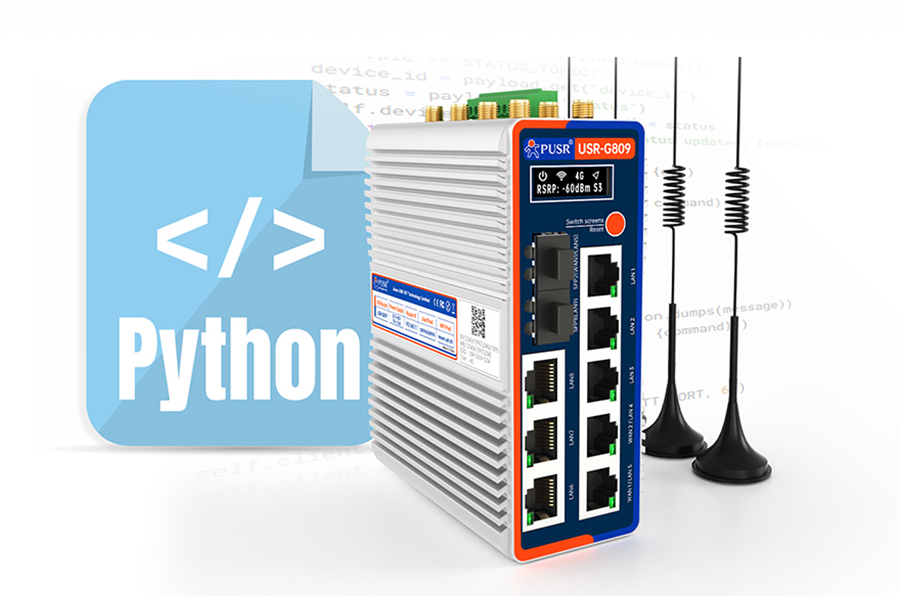
In industrial settings, devices may be deployed in remote or complex environments, making signal coverage a critical challenge. Routers improve signal stability through antenna design, multi-network switching, and signal enhancement technologies.
Technical Strategies:
External Antennas and High-Gain Design: External antennas offer superior signal reception compared to internal antennas. For example, an oilfield project used high-gain directional antennas to extend signal coverage from 500 meters to 2 kilometers.
Dual-SIM Card Redundancy: Automatically switches to a secondary card when the primary card loses connectivity. A logistics company achieved seamless nationwide roaming using dual-card routers, with network recovery times of <5 seconds.
Signal Enhancement Devices: Deploy repeaters or wireless access points (APs) in areas with weak signals. A smart agriculture project used repeaters to extend sensor signals in greenhouses to a control center 1 kilometer away.
Case Study: After deploying industrial routers on a highway, signal strength in tunnels increased by 30dBm, improving video monitoring smoothness from 70% to 99%.
Industrial data (e.g., process parameters, device status) is highly sensitive and requires end-to-end encryption during transmission. Routers support end-to-end encryption and secure protocol stacks to prevent data theft or tampering.
Technical Implementation:
Transport Layer Encryption: Supports TLS 1.3 and DTLS protocols to ensure data integrity. For example, in a smart grid project, the router encrypted control commands via an IPSec tunnel to prevent hackers from altering circuit breaker status.
Application Layer Encryption: Encrypts key fields (e.g., device ID, timestamp) using AES-256. A chemical plant encrypted temperature sensor data via the router, rendering it uninterpretable even if the encryption key was compromised.
Secure Tunnels: Establishes virtual private networks (VPNs) using protocols like IPsec/L2TP. A logistics company isolated public network threats using an OpenVPN tunnel, reducing data leakage risks by 80%.
Traditional firewalls rely on static rules and struggle to counter zero-day vulnerabilities and advanced persistent threats (APTs). Modern routers integrate AI-driven intrusion detection systems (IDS) to analyze network traffic and device behavior in real time, identifying abnormal patterns.
Technical Means:
Behavioral Baseline Modeling: Establishes normal device behavior models using machine learning. For example, a wind farm router immediately cut off network access to a wind turbine when abnormal communication frequencies were detected, preventing hacker control.
Threat Intelligence Integration: Shares attack signature libraries with cloud-based security platforms. An automotive factory router intercepted 99% of fake sensor data requests by updating detection rules in real time.
Micro-Segmentation: Divides networks into multiple security domains. In a smart city project, the router isolated traffic lights from surveillance cameras to prevent lateral attack propagation.
Case Study: In an oil and chemical scenario, the router detected abnormal communication frequencies from a PLC through traffic analysis and immediately blocked the connection via firewall rules, preventing production line downtime.
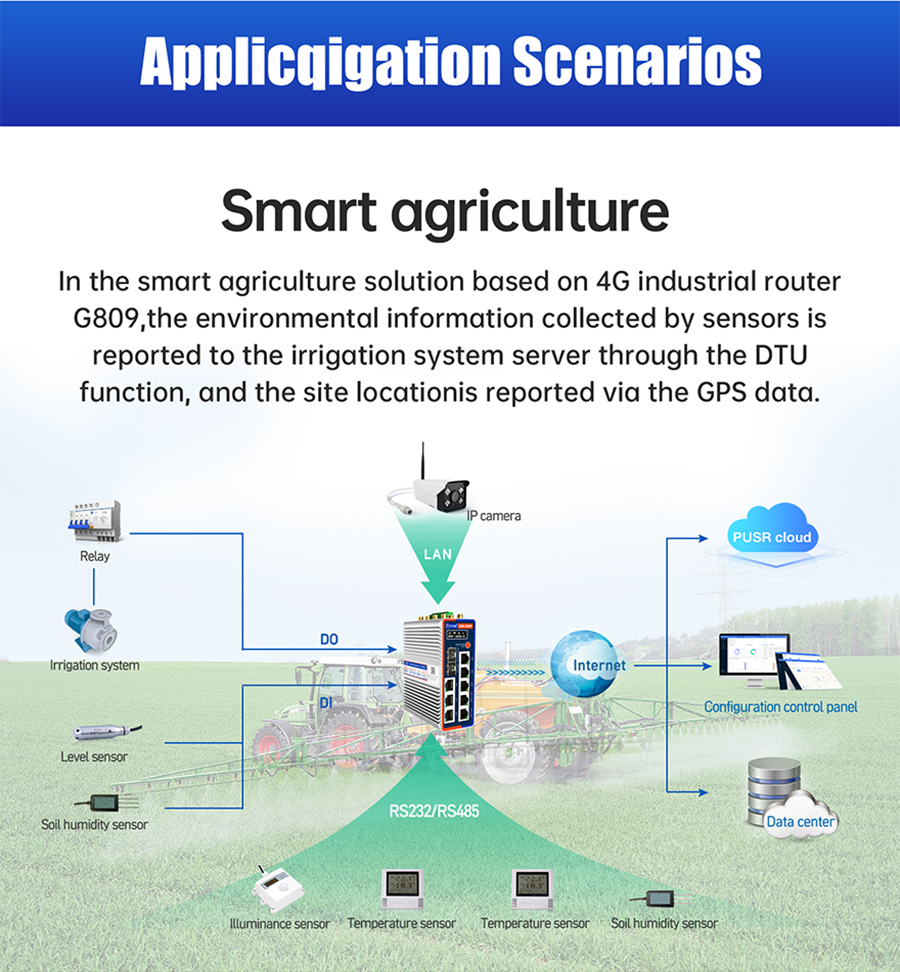
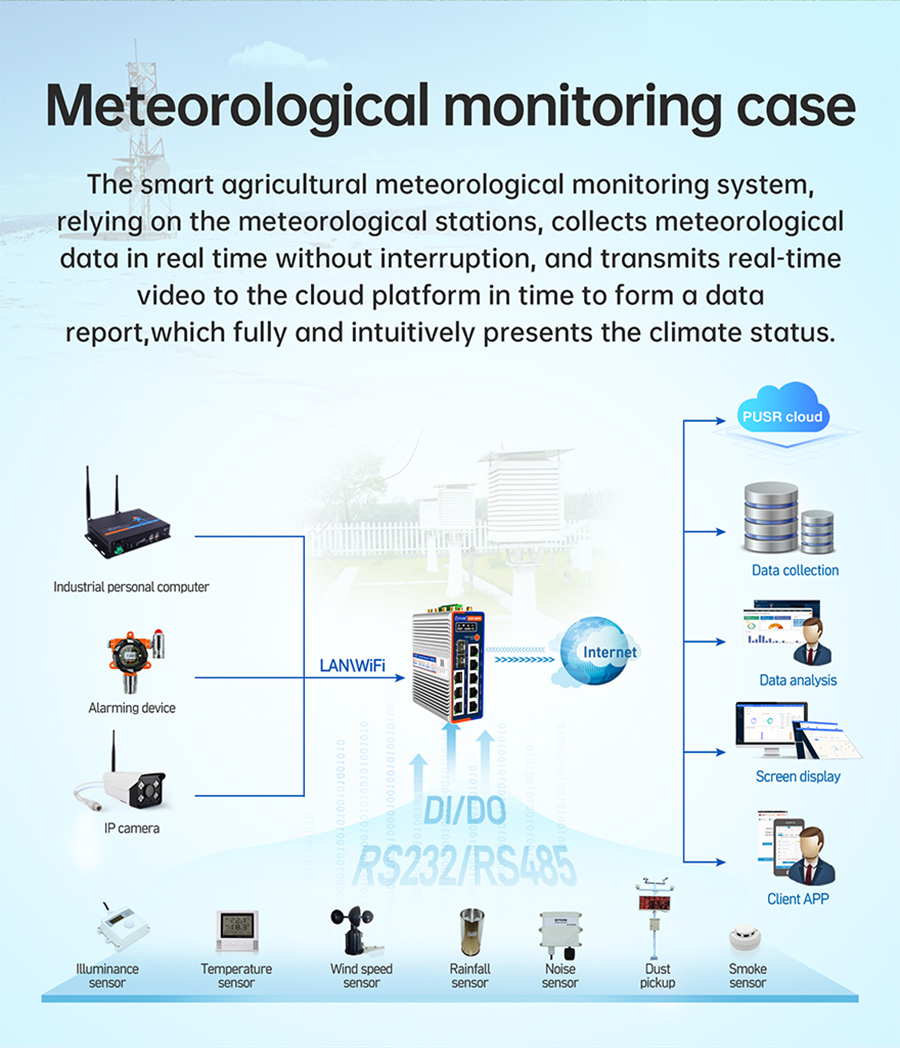
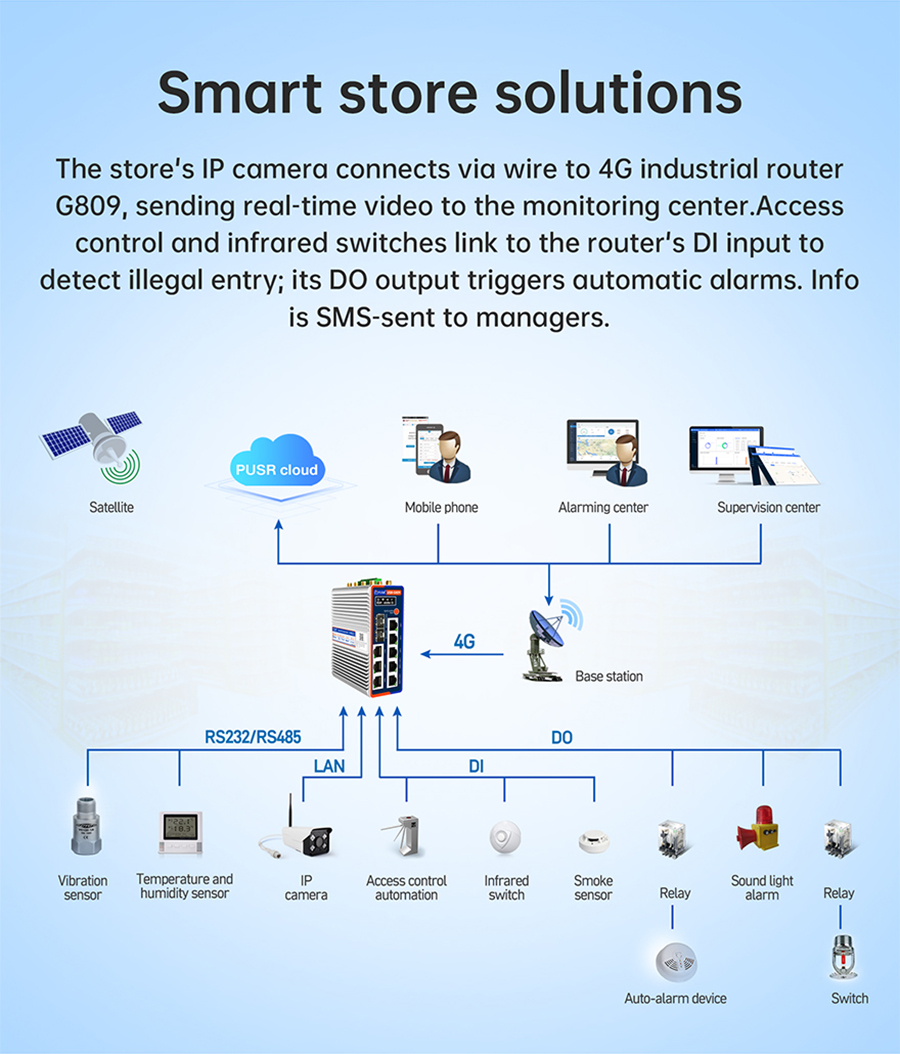
Industrial 4G routers are not just "connectors" between devices and the cloud; they are also "fortresses" for security protection and "carriers" for edge intelligence. Looking ahead, with the integration of 5G, AI, and TSN technologies, routers will evolve toward greater intelligence, security, and sustainability:
AI-Native Design: Integrates lightweight AI models for autonomous decision-making and adaptive optimization.
Security-as-a-Service (SECaaS): Dynamically updates protection strategies through cloud-based security platforms to counter new attacks.
Green Computing: Adopts low-power chips and dynamic power management to reduce energy consumption.
For enterprises, selecting an Industrial 4G router with high reliability, robust security, and edge computing capabilities is not just an investment in hardware but also a foundation for future intelligent upgrades and digital transformation. In the vast expanse of industrial IoT, routers will serve as the "flagship" guiding the way forward.